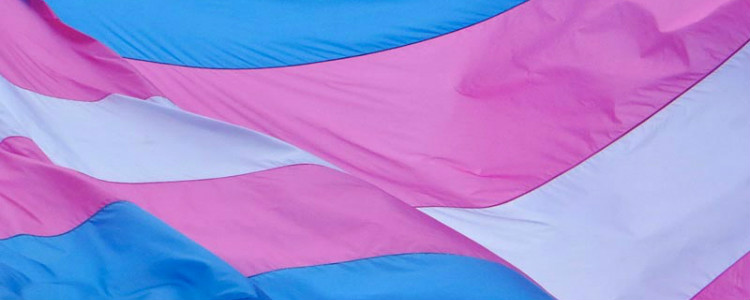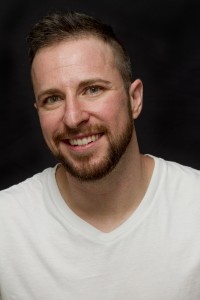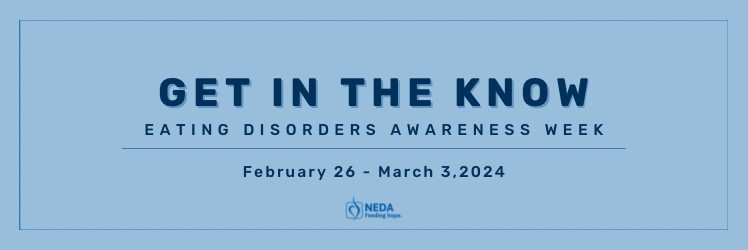There have been many moments in my life when I have questioned if I am lovable. My belief about what being lovable looked like began when I was a toddler and realized I’d much rather play with the boys than be around the girls. As we aged together I began to feel rejected as some of the boys uttered, “You can’t play with us. You’re a girl!” The words, “You’re a girl” would be repeated by many others as I grew into my young adult years. Each time was another blow to my gut, knocking the wind out of my body and leaving me feeling lost, broken, and unaccepted.
I grew up in a small farming community and struggled to find a place where I felt accepted by anyone, since my baggy pants, untucked athletics t-shirts and disheveled hair didn’t fit with my female body and the expectation that I should be feminine. I was often asked by the younger kids in the school’s hallways, “Are you a girl or boy?” I was asked by my family, “Don’t you want to look pretty like your sister?” I was then picked on and labeled a lesbian because the answer to everyone’s questions was, “No.”
The discomfort I felt by all the outward attention people paid to my appearance only heightened an insecurity that I felt I couldn’t tell anyone: I was a girl, but I wanted to be a boy. When my puberty began, my insecurities with my physical appearance became my obsession. As my body grew into a curvy female form I let go of the fantasy of turning into a boy and surrendered to the idea that I’d forever be uncomfortable in my own skin.
My curves made me feel fat.
My curves scared me.
At the age of 18, I decided that all of my discomfort in life would go away if I just lost weight. I believed that if I could look a certain way, which for me meant skinny, then my life would align itself, my parents would love me, and my social interactions would improve. So, I set my sights on a goal that I didn’t think I would be able to achieve, to be skinny.
By the time I turned 19, I was diagnosed with anorexia nervosa. A part of me liked my eating disorder because my body quit menstruating, my breasts were almost non-existent, and I could wear boy’s pants that hung off of my body. The other part of me just wanted to die and was scared of everything: people, my body, family, going out with friends, and eating outside my controlled environment.
My eating disorder caused me to live in a world that revolved around all the things I was trying to avoid: my body, food, fear, and loneliness.
After a year and a half of torturing myself through anorexia, my spirit was ready to surrender. As I felt the beats of my heart decrease to the point of stopping, a voice inside me said, “It’s not your time.” As it became silent, I felt a new rush of energy pulse through my veins and I decided it was time to quit living in fear and hiding. To do this I knew I had to be dedicated to going to therapy and seeing a nutritionist.
I went to weekly appointments for another four-and-a-half years.
From the ages of 19 to 24, my eating disorder controlled my life and kept me from exploring my true feelings. Through therapy, I finally accepted that I had to quit looking at my body and myappearance to judge my feelings of self-worth. Instead, I turned my attention inward where I wasable to face the one thing that scared me the most, sexuality.
At the age of 24, I came out as a lesbian. When I did this, my eating disordered behaviors started to decrease, and my posture straightened as I walked on my college campus. The energy I spent focusing on food dissipated with each day that passed after coming out, but the energy I spent dissecting my appearance and body increased.
As a child I knew I was supposed to be a boy, as a teenager I was scared of being a girl, and as an adult I didn’t know there was a way to fix what was wrong.
Eight months later I discovered how to fix what was wrong when I found a book about transgender men. Looking at their bodies and reading their stories I immediately knew why I was struggling with my own.
I am transgender.
After this discovery I took the steps to transition into the man I always felt I was. Through my transition I have lost relationships with some loved ones and minor friendships, but I have learned that if I would have continued to make choices in life based on what makes other people happy, then I would still be stuck in my eating disorder today.
The one thing that I am still learning is how to explore feelings without taking them out on my body. My biggest trigger is my estranged relationship with my parents. My sister tells me that my dad loves me, but that he is caught up in “appearances,” his “pride,” and how people see me. The ironic thing is, through my transition and my ability to state, “This is me, and this is how I am going to live my life,” I’ve gained respect from others and have developed it for myself. I have a newfound confidence, but the negative self-talk toward my body is always heightened when I learn of another comment my dad has made that hints toward his pride being more important than his kid. Because of my experiences, I work hard to help support and build self-confidence with youth while asking parents to let go of their own pride and remember how they felt as a child when the adults in their life weren’t truly listening and seeing them.
For me, all I want (and wanted in my recovery) is what I feel every kid wants regardless of their gender: To be loved, to be supported, but also to be allowed to explore this world and let others know who we are, not what they want us to be.
There is hope for recovery. I am now 32 years old and have been free of abusing food for nine years. I now know what hunger signals are, and I am able to nourish my body. Recovery begins when you allow yourself to love and recognize that being lovable is about respecting oneself and allowing your inner spirit to guide your actions. It is a life-long process, but I know I wouldn’t be where I am today if I wouldn’t have allowed myself to do one of the scariest things in my life, to honor my truths and recognize my internal identity.
My life with an eating disorder, my struggle with my body image and my transition from female to male are explored in my book, Second Son: Transitioning Toward My Destiny, Love and Life.
To learn more about Ryan’s transition, visit www.ryansallans.com.






